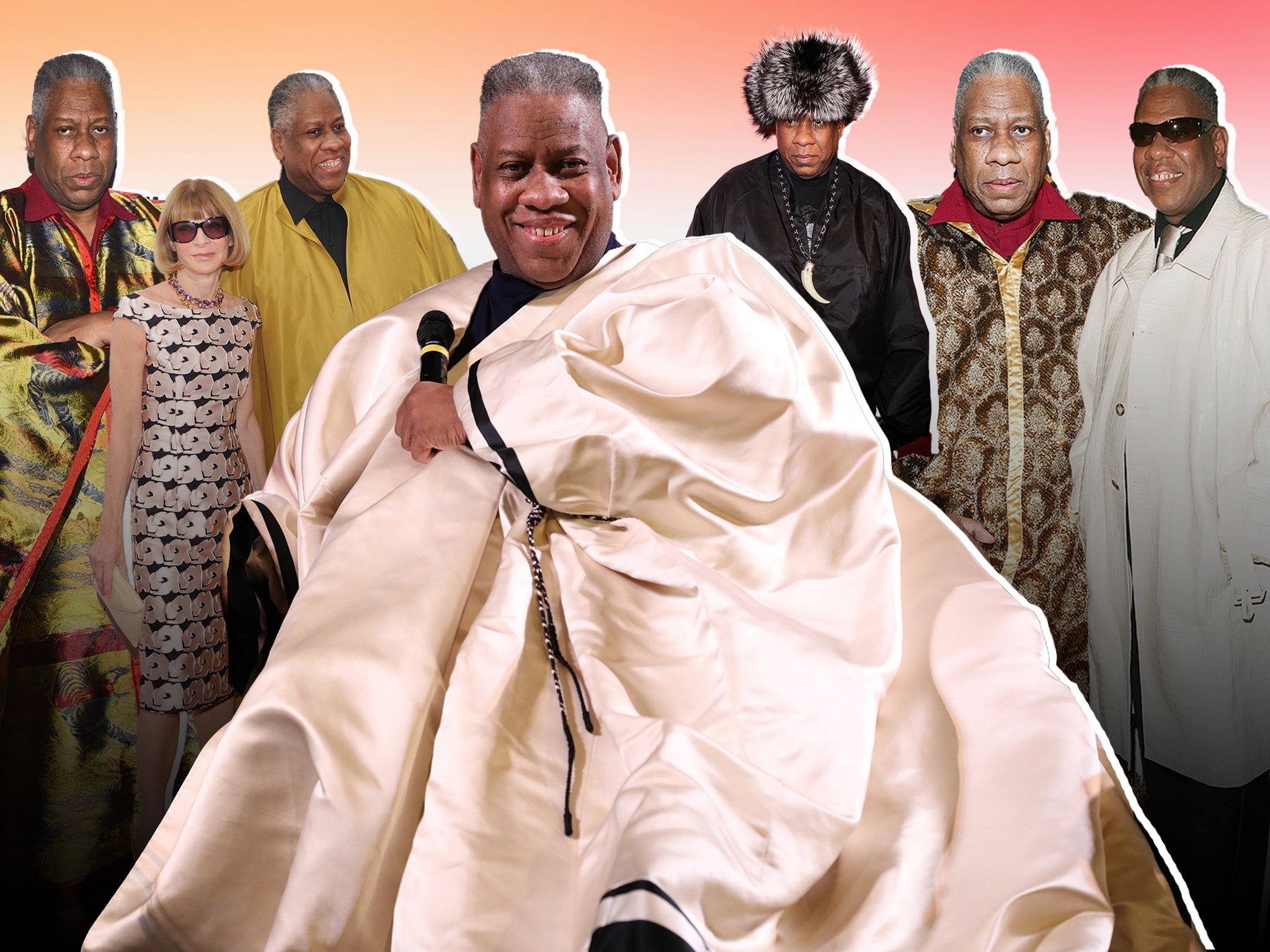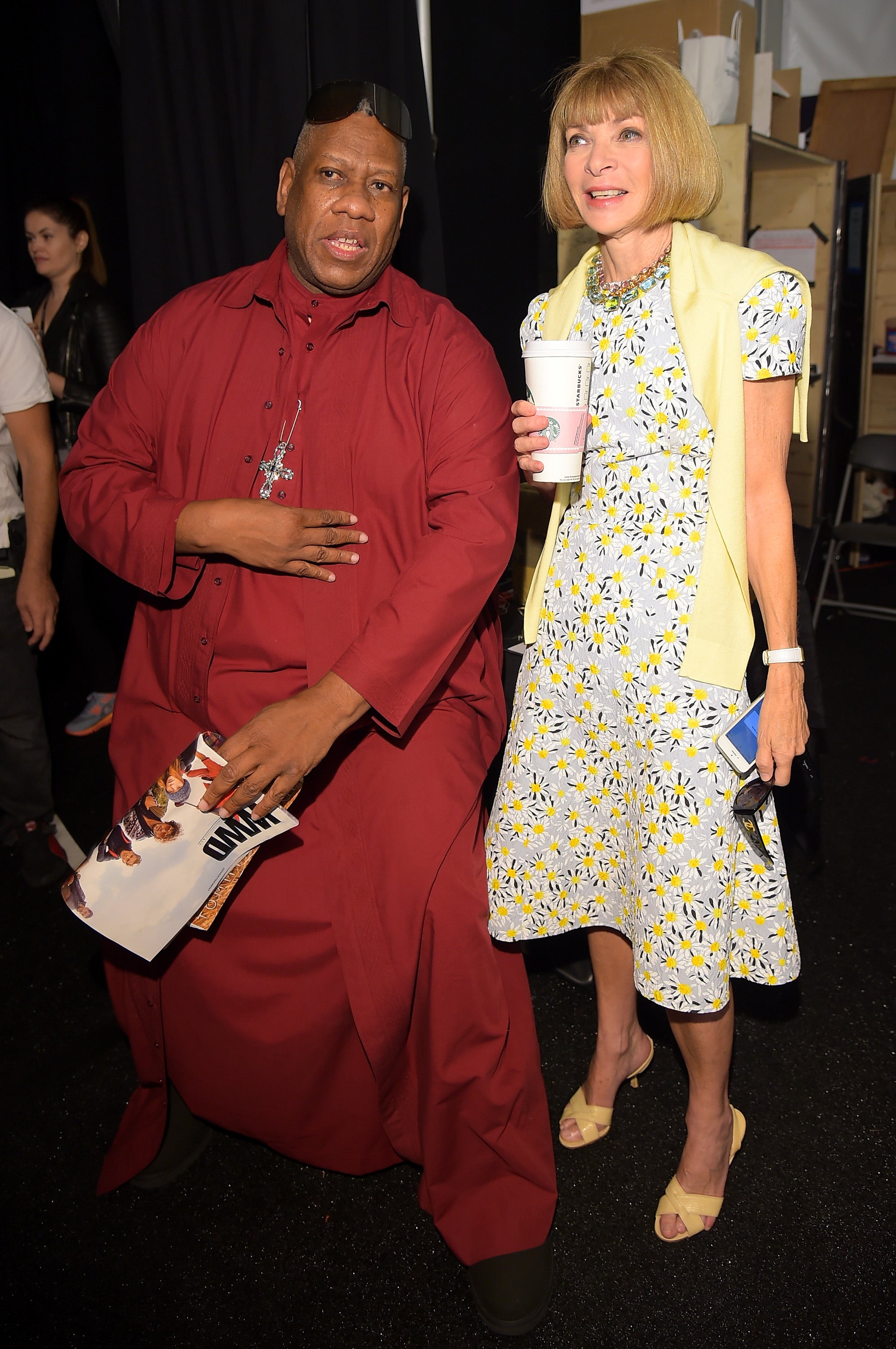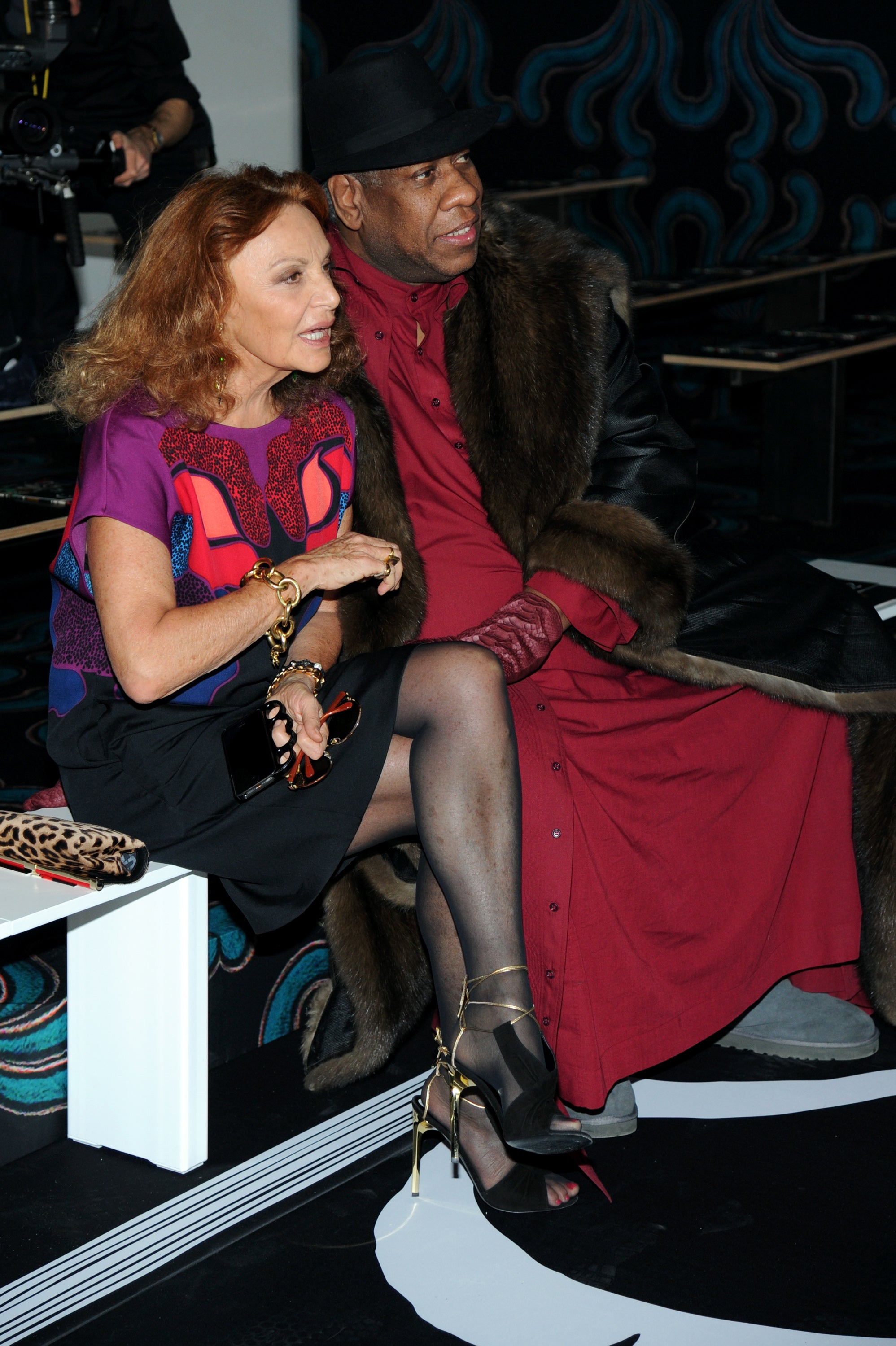From park ranger to fashion trailblazer: How André Leon Talley became an industry legend
As the former editor-at-large of Vogue passes away at the age of 73, Olivia Petter looks back on his seismic influence on the fashion industry


Your support helps us to tell the story
From reproductive rights to climate change to Big Tech, The Independent is on the ground when the story is developing. Whether it's investigating the financials of Elon Musk's pro-Trump PAC or producing our latest documentary, 'The A Word', which shines a light on the American women fighting for reproductive rights, we know how important it is to parse out the facts from the messaging.
At such a critical moment in US history, we need reporters on the ground. Your donation allows us to keep sending journalists to speak to both sides of the story.
The Independent is trusted by Americans across the entire political spectrum. And unlike many other quality news outlets, we choose not to lock Americans out of our reporting and analysis with paywalls. We believe quality journalism should be available to everyone, paid for by those who can afford it.
Your support makes all the difference.Think of fashion and chances are it won’t take long for André Leon Talley to spring to mind.
Even those outside of the industry have had a hard time not recognising the flamboyant 6’6 fashion journalist and former Vogue editor-at-large, who was renowned for his acerbic soundbites and statement ensembles.
With a career spanning six decades, comprising books, reality TV shows, documentaries, and even a Mariah Carey music video, Talley’s influence on fashion was nothing short of legendary.
As the industry mourns the loss of one of its greats, we look back on how this sartorial juggernaut made his mark.
Born in Washington DC in 1948, Talley was raised in Durham, North Carolina, by his grandmother, Binnie Francis Davis, who worked as a cleaner at Duke University.
Talley credits her for giving him an “understanding of luxury” from an early age.
At the age of 10, he discovered Vogue magazine in a local library and soon became intent on pursuing a career in fashion.
However, before embarking on this, he completed a BA in French literature at North Carolina Central University before winning a scholarship to Brown University, where he earned a Masters in the same subject.
Having briefly toyed with the idea of teaching French after graduation, Talley worked as a park ranger in Washington DC and Maryland; he told Associated Press in 2003 that he would dress up like a Civil War soldier and tell visitors about slaves who built Fort Washington.
Talley then decided to make the most of connections he’d made as a student at Brown to enter the fashion industry.
It was a chance encounter with Carrie Donovan, then an editor at Vogue, which led to him landing an unpaid volunteering role to work for the magazine’s former editor-in-chief Diana Vreeland at the Metropolitan Museum of Art’s Costume Institute in 1974.

Through his relationship with Vreeland, Talley landed a job at Andy Warhol’s Interview magazine. He worked his way up at the publication, where he also met Karl Lagerfeld, and then went on work for Women’s Wear Daily before eventually moving to Paris as the publication’s bureau chief there.
It was there that Talley began to establish himself as a key member of fashion’s society circuit, mixing with aristocrats and designers, including Yves Saint Laurent.
He then moved on to working for W and The New York Times before he caught the eye of Anna Wintour, who would eventually employ him at American Vogue as its news director before making him creative director, a role he held until 1995.
Talley then left the magazine before returning three years later as editor-at-large, where he stayed until 2013.
While at Vogue, Talley made a name for himself as one of the industry’s most extravagant creative forces, one who championed black talent and spearheaded legendary shoots and interviews, including one with former US first lady Michelle Obama.
He also cast Naomi Campbell as Scarlett O’Hara for a shoot in Vanity Fair that inverted the racial dynamics in Gone With The Wind.
Talley was outspoken about racism within the fashion industry throughout his career, telling The New York Times: “There’ve been some very cruel and racist moments in my life in the world of fashion. Incidents when people were harmful and meanspirited and terrifying.”

Talley was also vocal about the lack of diversity within the industry. “Where are the black people?” he added in the same interview before going on to mention some of the industry’s leading black figureheads.
“I look around everywhere and say, ‘Where are the black people?’ I think fashion tries to skirt the issue and finds convenient ways to spin it. There are examples of evolution, but they are few and far between.
“The biggest leap of faith was Edward Enninful becoming editor of British Vogue — that was an extraordinary thing. Virgil Abloh getting Louis Vuitton men’s wear.”
When Enninful landed the job at British Vogue, he wrote to Talley to tell him: “You paved the way.”
Throughout his career, Talley also appeared on TV several times, including as a judge on American’s Next Top Model, while he also had cameos in Sex And The City and Empire.
He also fronted and starred in many documentaries, including, most notably, The September Issue in 2009, which looked at the making of the September issue of Vogue. In 2018, he fronted a documentary about his life and career, titled The Gospel According to André.
Among his career highlights, Talley was also known for his larger-than-life persona and approach to fashion.
“André is from another time,” Tom Ford once told The New York Times. “A time when editors really did create a dream. A time when fashion was a much more elegant business and a time when style really did matter.”
However, this mentality soon became out of touch with the industry as budgets became tighter and more restrictive.
At Vogue, Talley claimed his contract was cut by $50,000 and he started to feel as if he had “hit [his] glass ceiling”, hence his departure from the title.
Talley published two memoirs, including ALT: A Memoir, which came out in 2003, and The Chiffon Trenches, in which he detailed his relationship with Wintour.
In the second memoir, Talley wrote that he had felt increasingly detached from the industry as he got older.
“I had suddenly become too old, too overweight and too uncool,” he wrote before accusing Wintour as being incapable of “simple human kindness” and “never really passionate about clothes”. “Power was her passion,” he wrote.
However, last year, Talley pivoted and praised Wintour for her accomplishments, telling The Cut: “She’s the empress. She’s worked hard. She’s gone through many battles. She deserves everything they give her. At 72, to have that job, is very, very, very impressive. I wish her all the best.”
While Talley had his ups and downs in fashion, he maintained that he wouldn’t have wanted to work in another industry.
“My story is a fairytale of excess, and in every fairytale there is evil and darkness, but you overcome it with light,” he told the Guardian in 2020. “I want every person I come across – the stranger on the street, the church member in the pew next to me – to feel love.”
Join our commenting forum
Join thought-provoking conversations, follow other Independent readers and see their replies
Comments